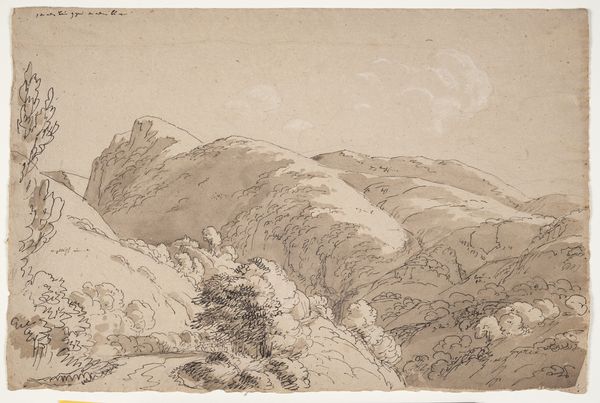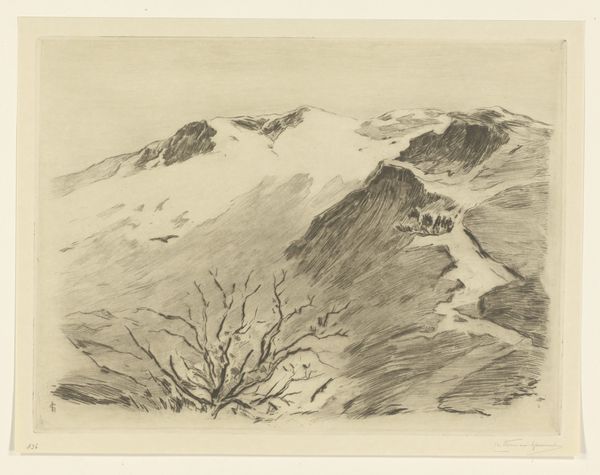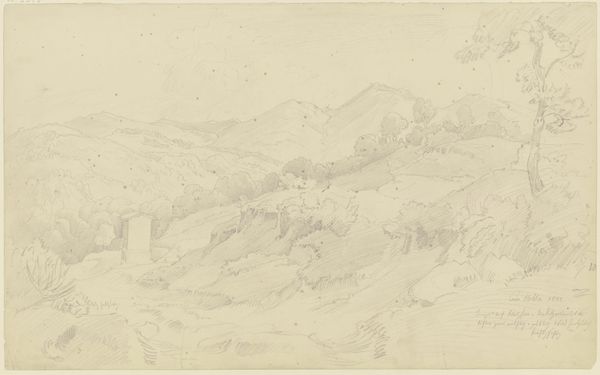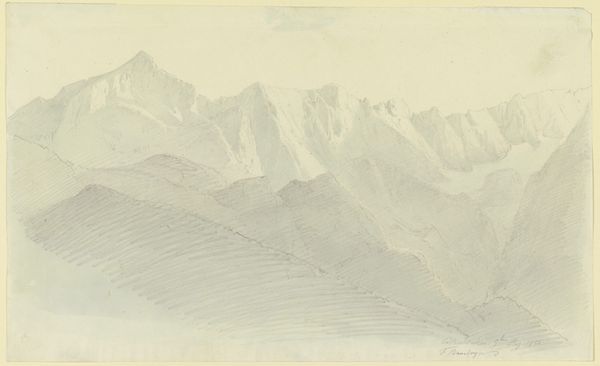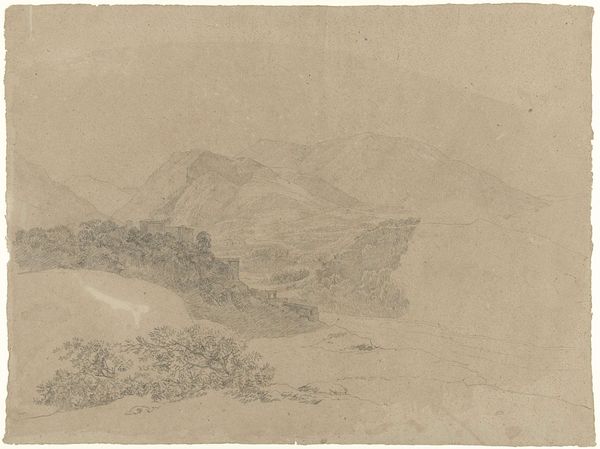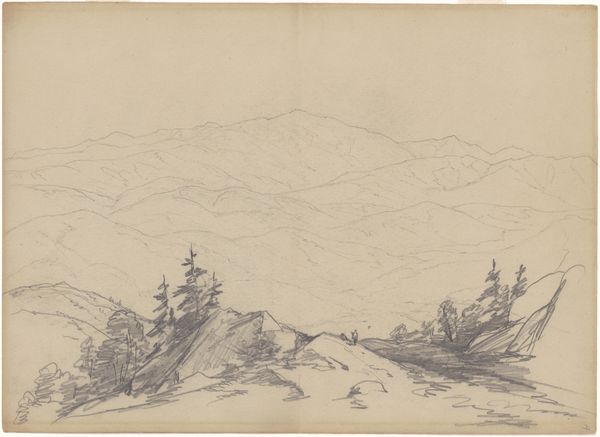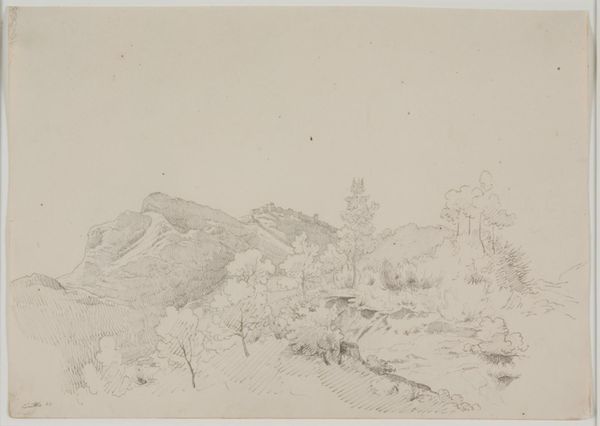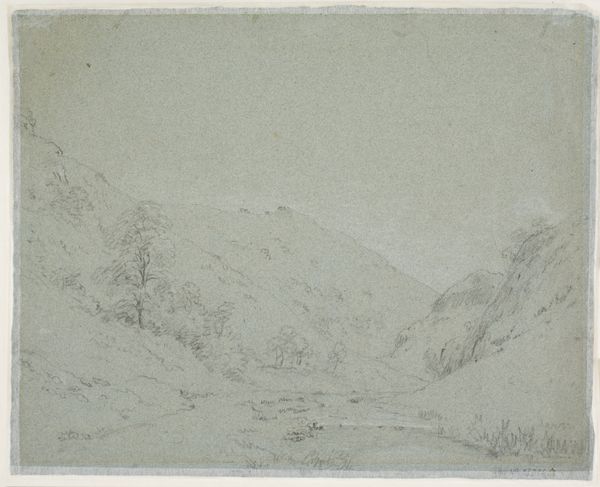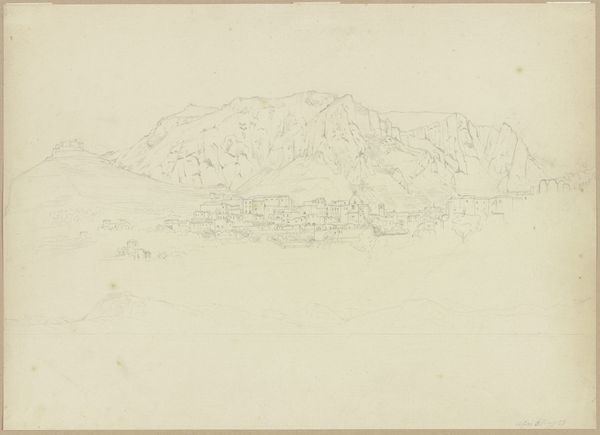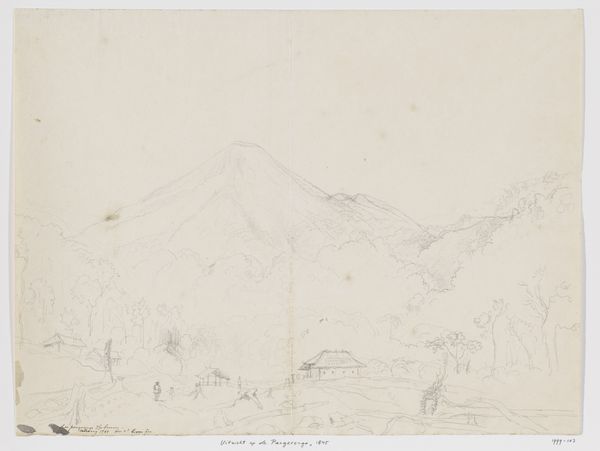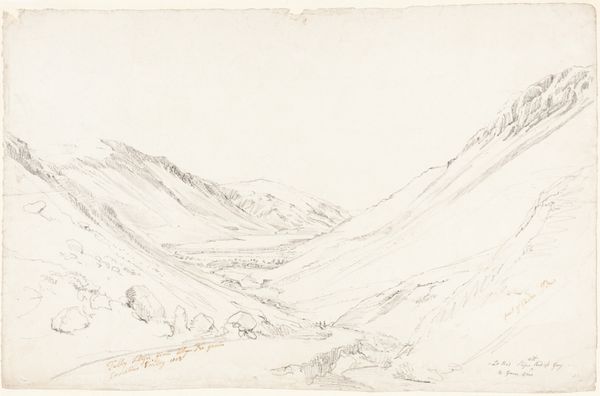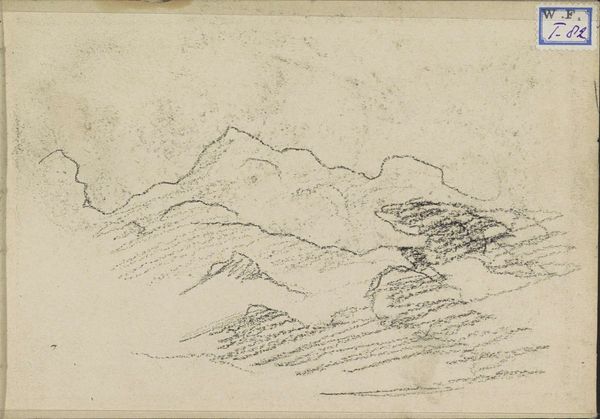
drawing, pencil, graphite
#
drawing
#
pencil sketch
#
landscape
#
etching
#
romanticism
#
mountain
#
pencil
#
graphite
#
pencil work
#
realism
Dimensions: height 311 mm, width 450 mm
Copyright: Rijks Museum: Open Domain
Curator: This is "Berglandschap bij Carrara," or "Mountain Landscape near Carrara" by Pierre Louis Dubourcq, dating roughly from 1825 to 1873. It’s a pencil and graphite drawing on paper, currently residing here at the Rijksmuseum. Editor: Oh, it’s dreamy! I'm immediately struck by this wistful quality. It's like looking at a memory, the landscape fading slightly at the edges of your mind. The light is so soft; even the mountains seem gentle. Curator: That's a keen observation. Dubourcq, a figure associated with the Romantic movement, frequently sketched outdoors, and this piece embodies the movement’s penchant for emotional, idealized representations of nature. Note how he uses pencil strokes of varying darkness to create a sense of depth, pulling the viewer into the scene. Editor: And the clouds! They’re almost characters themselves, looming and billowing. You get a real sense of the sublime here. Were landscapes a big deal back then? Curator: Absolutely. With urbanization growing, artists began portraying nature to explore its wild beauty. Drawings like these allowed artists to create preparatory sketches that could evolve into other artworks like etchings, capturing not just what was visible but a feeling. Consider this piece a reflection on Italy's socio-political climate under post-Napoleonic reforms. Editor: I love how it feels both incredibly detailed and fleeting. The details around the base are so sharp and intentional! Then further up, at the mountains, they turn dreamlike. I like to imagine what kind of state the artist must have been in when conceiving this work, you can sense how he was in touch with the nature around him. It’s a really evocative piece. Curator: It's interesting you mention his emotional state because it connects us to art’s place in culture. Dubourcq, and his contemporaries sought to use their craft as a voice in shaping emerging nationalist identities. "Berglandschap bij Carrara" goes beyond mere pretty scenery; it evokes themes like cultural preservation amid an unstable economy after The French Empire crumbled apart. Editor: Makes you wonder how a seemingly simple landscape sketch can tell such a layered story. It has made me rethink how art can connect social moments to emotional reflection. Curator: Indeed. Dubourcq managed to make Carrara’s landscape a symbol. Next time you travel, a pencil, some paper, and openness may allow the artist within us all to evoke landscapes.
Comments
No comments
Be the first to comment and join the conversation on the ultimate creative platform.
